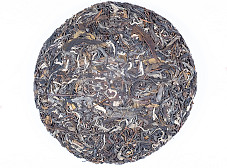
Vietnam - Tea from Ha Giang
The mountainous region of Ha Giang in the very north of Vietnam, inhabited by more than twenty ethnic groups, directly borders the Chinese province of Yunnan. The borders in these areas have changed frequently in the past, and tea trees have been growing in the local forests for centuries. Tea cultivation and drinking in Vietnam has a tradition of more than a thousand years. Ethnic minorities in the mountainous northern regions are just as familiar with tea as their neighbors in southern Yunnan.
More...Tea Communities
Especially for the Hmong, Dao and Thai communities, the long history of growing and consuming Pu-erh tea is part of their cultural and social customs. The main production takes place in the provinces of Ha Giang, Lao Cai, Yen Bai and Son La in northern Vietnam. These areas have similar climatic and geographical conditions to Yunnan, which is ideal for growing large-leaf tea trees. Many old Shan Tuyet tea trees grow at high altitudes between 700-2800 meters.
Mountain Snow
Shan Tuyet is a local form of Camellia Sinensis var. Assamica. Shan Tuyet means "mountain snow" in Vietnamese, referring to the white hair on the tea buds and leaves that resembles snow. While still part of the larger Assamica variety, Shan Tuyet trees are prized for their resistance to harsh climates and the unique flavor profile that is shaped by the terroir of Vietnam's high mountain regions.
